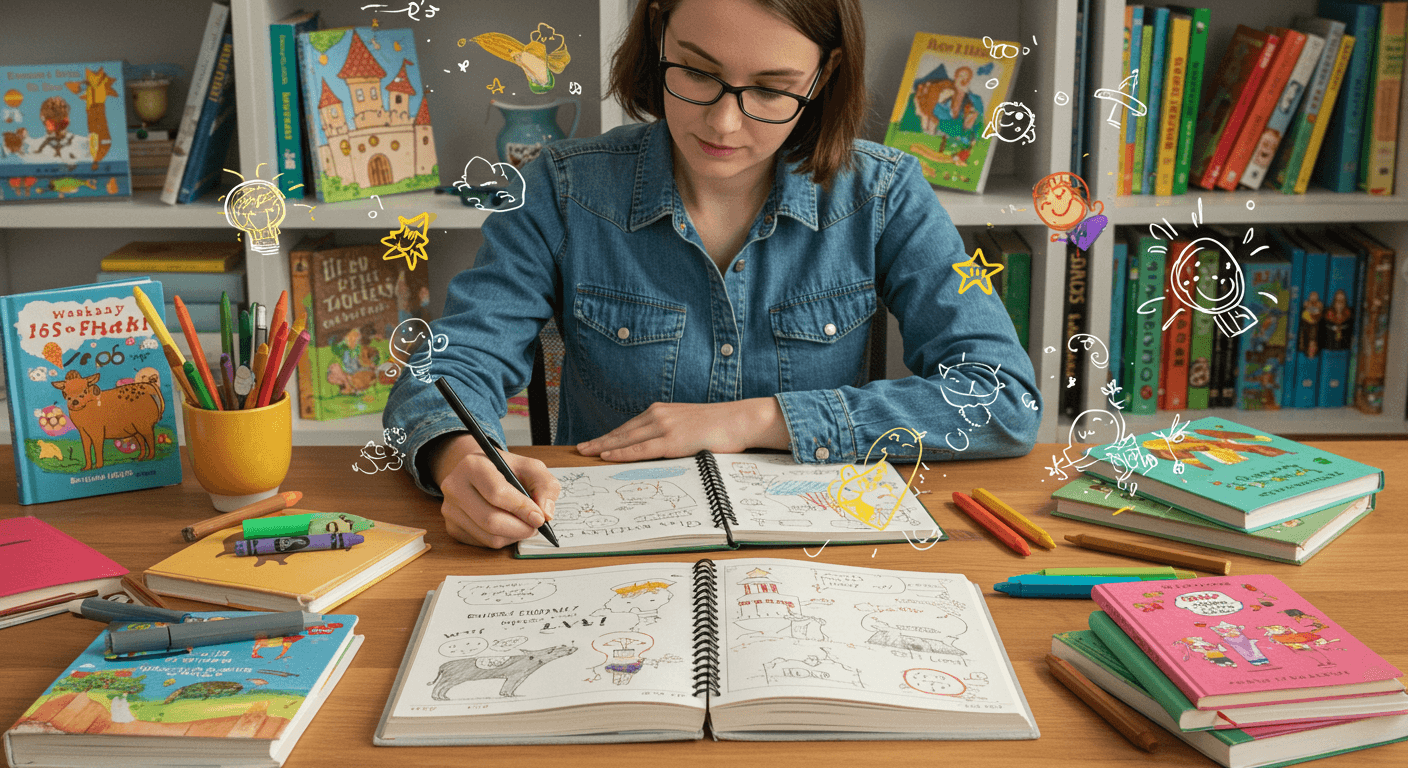Writing a children’s book is a wonderful project. But a children’s book obeys specific codes, which you must be aware of.

The children’s book market
Children’s books are one of the most active publishing sectors. Young readers are increasingly numerous. Each year, approximately 80 million copies of children’s books are sold in France. More than 15,000 titles are published each year in France: new editions, translations, and original works. There’s something for everyone. But the sector is also suffering from saturation: how can you stand out from all these offerings?
Know your reader
The child is a very particular reader.
- He reads, rereads, and has books read to him.
- He becomes passionately attached to the characters and enjoys following them on different adventures.
- He has a small vocabulary, but he can understand complex subjects.
- He expects a book to meet the codes of the children’s literature genre, and those of his age.
- The child has a very strong imaginative capacity.
In children’s literature, there are different ages. And at each of these ages, the number of words in the book varies:
- 0-2 years: picture books
- 3-5 years: Kindergarten. Around 1000 words
- Ages 6-8: Early readers. Between 5,000 and 10,000 words. Books are quite distinct between boys and girls at this age.
- 9-12 years: Pre-teens read “gateway” novels. Approximately 30,000 words. Reading levels can be quite varied at this age.
- 13-16 years: Teenagers. About 70,000 words.
- 17-19 years: young adults
Every author should have their target reader and their age in mind. This is essential to successfully address your reader and meet their expectations. The younger the reader, the shorter the sentences should be, the simpler the vocabulary, and the fewer the words.
Addressing the dual readership issue
Children suggest, and parents buy. Parents also have their own sources of information (Facebook). Parents pay attention to the themes, the values conveyed, and the characters’ style. They also check the literary style. Overall, parents ask themselves one question: ” Is this book acceptable in its current state at home, in my child’s library?”
All texts reflect the author’s voice, but this is especially true for a children’s book. The author’s voice is reflected in the syntax, punctuation, and rhythm of the narrative. The vocabulary should be age-appropriate. You can definitely include complicated words. They shouldn’t be too numerous or repeated too often. However, children enjoy discovering new words. A good children’s author isn’t preachy. He or she imparts knowledge and experience, but doesn’t lecture. What appeals to both children and parents is the ability of children to find solutions on their own.
The rhythm of the story
The structure of a children’s book follows fairly classic rhythms. Usually in waves, with plots that weave in and out, leading to a final denouement. We can also be interested in the so-called “Disney” structure, called The Hero’s Journey, which takes the hero through different environments: call to adventure, mentor, leaving the comfort zone, trials, rewards, etc. Structures vary, and each book must follow its own rules, while ensuring that it adheres to the framework of a children’s story. Children’s publishers are the most attentive to respecting the rules of writing and the framework of a children’s book. Illustrations are an integral part of your story. Most of the time, publishers expect raw text, without illustrations. But in your writing, you must keep the illustrations and your wishes in mind. To create a good children’s book, whatever the age, the illustrator plays a key role, and success doesn’t depend solely on the story.
The characters
In a children’s book, the characters are usually older (1 to 2 years old) than the target reader. Your character should always be supported by a character sheet, which you will have taken care to develop in the smallest details. In the character sheet, show his fears, his tics, his qualities, his emotions… When your book is illustrated, the character sheet will be particularly useful. The hero is the main character. In children’s books, the hero goes through an initiatory journey, regardless of the target age.
The title and the first sentences
More than other readers, children’s readers are fickle. If they don’t like the first few pages, they move on to something else. Their attention span is obviously limited. The title of a children’s book should be short and captivating. It should describe the story, the characters, and immerse the reader in the book’s setting right away. It’s a real challenge to build a captivating title. The first sentences should immerse the reader in the immediate action. The main character experiences a problem immediately. Writing a children’s book is not an easy project. It sometimes seems that the length of books makes them easier to write. This is not the case. It takes as much time to produce a quality children’s book as it does an adult novel, because the subtleties are numerous and the codes are very important.
The end of the story
The ending of your story is more important to children than to adults. The end stabilizes fears and emotions, and it prevents nightmares. Some children will experience emotions during the story and need to fall asleep on a secure foundation afterward. First, imagine the atmosphere of the ending, and its philosophy, and only then work on the words and sentences.
Proofreading and beta-reading
It’s essential to get your book reviewed by other readers and receive feedback. Use a proofreading service and beta readers who should work independently. Your loved ones won’t tell you the truth about what they think of your text, or they won’t be able to admit it to themselves. They want to please you.
